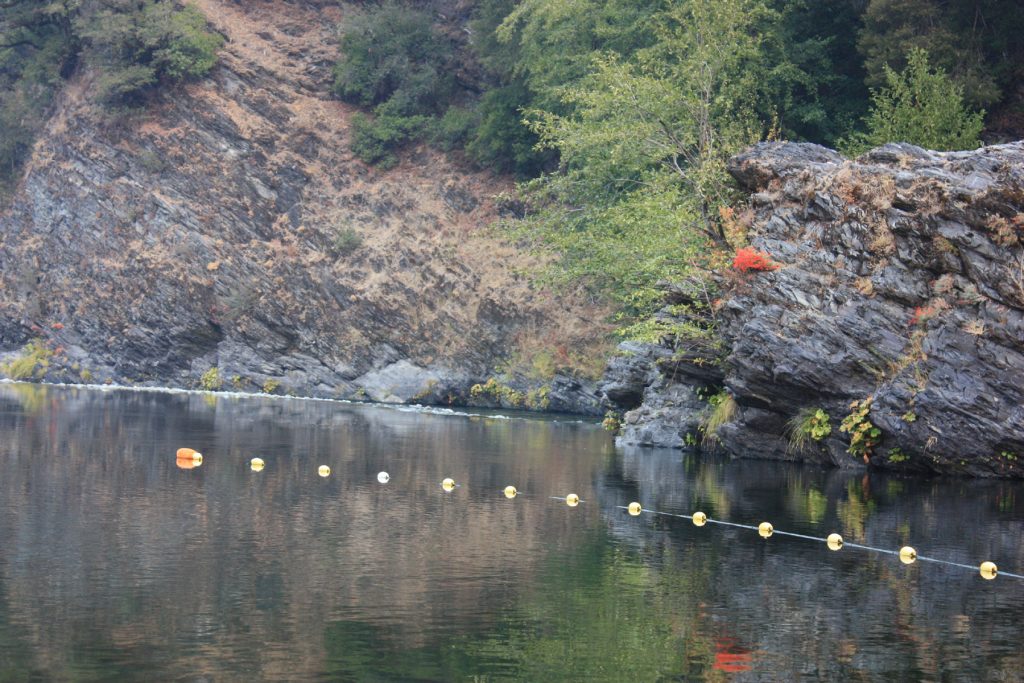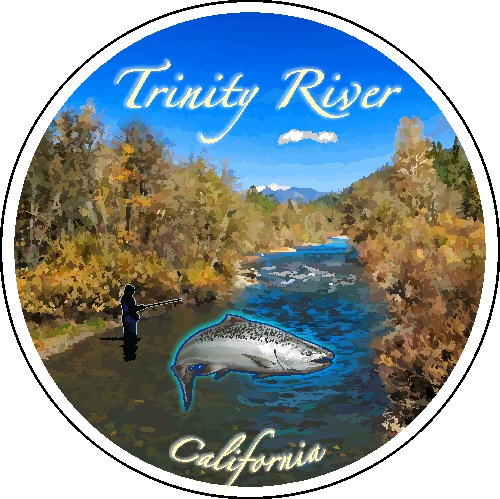
By Chad Abel, Trinity River Restoration Program staff
The Trinity River Restoration Program (TRRP) frequently receives questions concerning tribal nets. It might be because two of our eight program partners on the Trinity Management Council, the Yurok Tribe and Hoopa Valley Tribe, have federally reserved fishing rights on the Trinity and Klamath Rivers. Or maybe it’s because TRRP is involved in the monitoring and data collection of outmigrating juveniles and returning adult salmon, so it’s assumed we’re involved in harvest management as well. We like to hear from the public and field their questions, but to set the record straight, TRRP does not have a role in setting bag limits, seasons, gear restrictions, or anything like that. But some of our partner agencies (including the tribes) do. To understand the contemporary framework of salmon management in the Klamath Basin, including the role of the tribes and the use of nets by their membership, it’s helpful to first understand why many tribes on the west coast and elsewhere have “reserved” fishing rights.
Why do the Yurok and Hoopa Valley Tribes have rights to harvest salmon?
During the period of European colonization, Native American tribes exchanged vast tracts of land for monetary payment and minimal guarantees while reserving certain small parcels for their exclusive use. These smaller parcels are referred to as reservations today. The Hoopa Valley Reservation, for example, straddles the lower Trinity River to the confluence with the Klamath River, and the Yurok Reservation similarly borders each side of the lower Klamath River down to the ocean. Many of the tribes that signed treaties or agreements with the federal government expressly reserved the right to fish. People often mistakenly consider “tribal rights” as special rights that have been granted to tribal people by the U.S. Government. The fact is these rights, such as tribal fishing rights and the right to self-governance, are rights that tribes as sovereign nations had before European colonization. These “reserved rights” were retained when the tribes gave up their land by treaty or agreement. In other words, these agreements were not a grant of rights to the tribes but a grant of rights from them.
The harvest rights retained by the tribes were subsequently ignored almost immediately after the territories assumed statehood and began regulating their natural resources. The Lake Superior Ojibwe for example signed a series of treaties with the federal government from 1837 – 1854 that, just decades later, the State of Wisconsin refused to acknowledge, as evidenced by this 1896 report by the Board of Indian Commissioners:
“The Red Cliff reservation, a third member of the La Pointe Agency group, is about 24 miles by rail from Ashland. It contains 191 Indians, a particularly industrious and deserving lot of people. A good many of the Red Cliff Indians obtain their chief employment at the Bayfield sawmills, and many others until recently earned a fair subsistence by fishing with nets in the bay along the border of the reservation. Their fish they would pack and ship in kegs to the market, working on a cooperative system. Now the State of Wisconsin has adopted laws which forbid their net fishery, although the Treaty of 1854 between the Tribe and the United States Government guarantees them this privilege. They cannot understand the conflict of State laws with Federal treaties, and still consider themselves entitled to fish, though they have made no attempt to assert their rights aggressively since some of the fishermen were arrested by the State authorities.”
The west coast states similarly adopted rules forbidding tribal harvest by enforcing state fishing regulations, like rules forbidding net fishing, against tribal members. In many cases, states took the extraordinary step of arresting tribal members even when fishing on their own reservation lands, like in the Wisconsin example above. A series of conflicts and protests erupted across the country in the 1950s and 1960s as tribes and their membership challenged state control. The uprising ultimately prompted the federal courts to step in and settle the issue of tribal fishing rights. The result was a series of sweeping court decisions against the states and in support of tribal harvest rights.
Instrumental court decisions for west coast tribes include the Boldt Decision (1974) against the State of Washington, US v. Oregon (1968) against the State of Oregon, and Mattz v. Arnett (1972) and the subsequent Arnett v. 5 Gill Nets (1975) against the State of California. The era of tribal rights reaffirmation in the Midwest was similar, with important court decisions like the Gurnoe Decision (1972) and Voigt Decision (1983) being decided against the State of Wisconsin.
However, it wasn’t until 1993 with the Department of Interior solicitor’s opinion M-36979 that the federal government formally recognized the fishing rights of the Hoopa Valley and Yurok Tribes.
What impact did these federal decisions have?
How the outcome of these court decisions plays out today varies at the regional level and, in some cases, on a state-by-state basis. Ojibwe bands in Wisconsin for example retain on and off reservation rights to hunt and fish. In contrast, the harvest rights of the Yurok Tribe and Hoopa Valley Tribe in California are restricted solely to the boundaries of their reservations. In some tribal fisheries, commercial harvest is allowable, while in other fisheries tribal harvest is for subsistence (home use) only. The unifying result is that today tribal nations play an important co-management role in fisheries management, are assured a proportion of the available harvest, and exercise the right to self-governance in regulating their harvest.
Who sets harvest limits?
The process of setting harvest limits (aka quotas) for salmon conservation falls to the Pacific Fisheries Management Council (PFMC). The PFMC has nineteen council members from Idaho, Washington, Oregon, and California, including one voting seat reserved for a tribal representative. The PFMC determines the salmon quota that is used by tribal nations and the west coast states for the ocean and river fisheries. The tribes and states collectively participate on the PFMC, and the advisory committees to the PFMC, to set quotas that support tribal harvest and meet conservation objectives for the entire Pacific salmon fishery.
Does PFMC set regulations too?
No, the PFMC does not set the regulations that determine how the quotas they establish are fished. For the ocean fishery, the National Oceanic and Atmospheric Administration (NOAA) manages commercial and sport fishing regulations. At the state level, the California Department of Fish and Wildlife (CDFW) sets the regulations for the state salmon quota that determines when, where, and how a sport license holder can fish for salmon. CDFW and NOAA have procedures in place to monitor and report harvest to PFMC so quotas are not exceeded.
Tribes with harvest rights, like Yurok Tribe and Hoopa Valley Tribe, likewise have the authority through self-governance to impose fishing regulations on their members for conservation purposes. That is to say, the method of harvest is largely left to the tribe to decide and often involves a mix of traditional gear like weirs and nets with modern gear like fly rods and fishing tackle. Yurok Tribe and Hoopa Valley Tribe, like the State of California and NOAA, monitor and report harvest to PFMC so quotas are not exceeded.
The Supreme Court recognized the importance of salmon to Northwest Tribes when it concluded access to the fisheries was, “not much less necessary to the existence of the Indians than the air they breathed.” The native people of the Klamath River Basin have depended on salmon for thousands of years. Next time you see a net in the river, it’s important to remember the history of native people in the Klamath Basin, the prolonged struggle to retain their fishing rights, the longstanding tradition that net represents, and the modern role the tribes play in co-management of the fishery.
